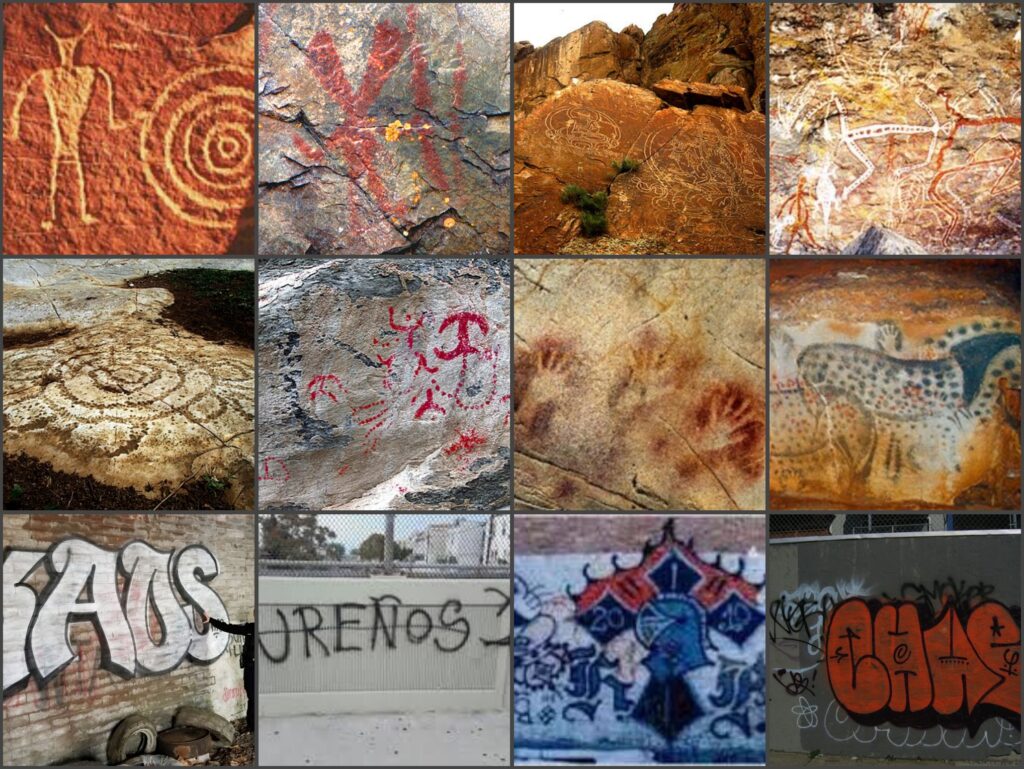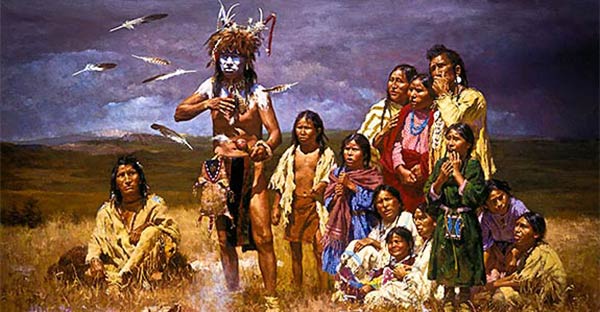If art is information, and animal urine territorial markers are information, then primitive art developed as a form of delineating property and use rights. From rock art to cave paintings, and from simple tokens to complex seals in the Near East, art served as a system of unforgeable informational safety.

The Need for Security
The early Mesopotamian clay tokens [1] (which were likely descendants of much earlier and rudimentary token, counting, accounting, and exchange mechanisms made of stone, bone, shells, and other materials) were extremely insecure in the context of growing populations.
If they were used only as an “accounting” mechanism, which I doubt, they may have been useful, but as counting, accounting, mapping property, and exchange mechanisms [2], they must have been easy to forge (just get a piece of clay, make a little cone, and claim your fake portion of grain).
However, evidently they worked (if they were actually the only system) for 4000 years [3].
This is likely because populations in those villages must have been small [4] (e.g. from 150 to 1500 people), so the kings, queens, chiefs, priests, priestesses, or administrators must have roughly remembered what tokens they gave specific individuals in a season. And, they knew more or less individuals’ profiles, land allotments, and productivity, which, together with peer pressure, would have prevented them from cheating. If not, they would have been labeled as cheaters, which caused a high evolutionary cost in a small closely related population.
In a growing population [5] (say from ~2000 to 5000+ per village) and more complex inter-village trade, first envelopes with the tokens printed on top, and then seals [6], with ever more elaborate “art” imprinted on their surface, were necessary to guarantee unforgeability [7].
Hence, art was a form of unique complex information pattern to increase security and minimize the possibility of forgery. Art was a sort of signature. Also, a mark to print and signal a unique unforgeable claim of property [8] over a mobile or immobile object.
Unforgeable Informational Security in Nature
Outside of food, the most basic form of property in nature is ‘territory’ in the form of space. Force is a common form of establishment and defense of such property type.
However, lions, hippopotamus, wolves, and many other animals mark territory [9] with unique chemical signatures in the form of urine or feces. These signatures are unforgeable chemical marks, thus purely informational, which, together with violence, serve to establish, delineate, and ‘legitimately’ defend territory.
‘Legitimately’ in this context means that it is generally accepted – by culture or genetics – in those species that, when a chemical marker exists, that the marking organism is the rightful ‘owner’, thus reducing conflict in several ways by defining who is the justified claimant and who is the intruder, which is important information in those kinds of animal conflict minimization [10] games.
Evolution of Art as an Unforgeable Informational Marker
Art on cylinder seals [11] presented a similar forgeability difficulty as chemicals (information difficult to forge) to cheaters, thus art is an extension of the informational security mechanisms evolved in nature.
If the above hypothesis is correct, and extending the concept further, then all observed forms of art in prehistory [12] (millenary rock art, cave paintings, hand stencils made with ochre, carved bones, patterns on stones, idols, megaliths, monuments, seals, etc.) were “art” proper proximately, but territory and property markings, therefore part of a portfolio of security devices that increased evolutionary individual and inclusive fitness, ultimately.

A modern analogy to chemical and subsequent artistic informational marking of physical spaces is when urban gang members use graffiti to mark their territories.
Sequence of Events
Evolution of art as a security device; from chemical to artistic unforgeable information:
1. Need for security.
2. Marking territory as a form of property.
3. Need for unforgeable informational signatures.
4. Use of unique chemical signatures as markers (animal urine, feces, etc.).
5. Evolution of artificial unique informational signatures in humans: Abstract thought, physical dexterity, and art.
6. Origin of rock art, cave paintings, carved artifacts, shapes on cylinder seals, etc. as territorial and other kinds of property and rights markings and signaling.
Extended Use of Informational Markers in Nature and Culture

Physical and chemical information as unforgeable markers of property, or kin, or group membership, are widely used in nature to identify offspring, or other organisms by colors, or shapes on their fur, etc.
References
[1] Making Tokens Talk – by Denise Schmandt-Besserat and Niloufar Moghimi: http://sites.utexas.edu/dsb/making-tokens-talk/
[2] Shelling Out: The Origins of Money – by Nick Szabo: https://nakamotoinstitute.org/shelling-out/
[3] The Evolution of Writing – by Denise Schmandt-Besserat: http://sites.utexas.edu/dsb/tokens/the-evolution-of-writing/
[4] The Social Brain Hypothesis – Robin I.M. Dunbar: http://etherplan.com/the-social-brain-hypothesis.pdf
[5] Historical urban community sizes – by Wikipedia: https://en.wikipedia.org/wiki/Historical_urban_community_sizes
[6] Cylinder seal – by Wikipedia: https://en.wikipedia.org/wiki/Cylinder_seal
[7] The Playdough Protocols – by Nick Szabo: https://nakamotoinstitute.org/the-playdough-protocols/
[8] History and Security of Property – by Nick Szabo: https://archive.is/dRXEK#selection-21.0-21.36
[9] Animal Territory – Retaining a Territory – by Wikipedia: https://en.wikipedia.org/wiki/Territory_(animal)#Retaining_a_territory
[10] The Logic of Animal Conflict – by J. Maynard Smith and G. R. Price: http://etherplan.com/the-logic-of-animal-conflict.pdf
[11] Cylinder Seal of Queen Puabi – by Osama Shukir Muhammed Amin: https://www.ancient.eu/image/8104/cylinder-seal-of-queen-puabi/
[12] Cave painting – by Wikipedia: https://en.wikipedia.org/wiki/Cave_painting
[13] Elaine Ou: https://elaineou.com/about/
[14] Traditional Face Painting – by University of Oklahoma Press: https://danceforallpeople.com/traditional-face-painting/
Code Is Law